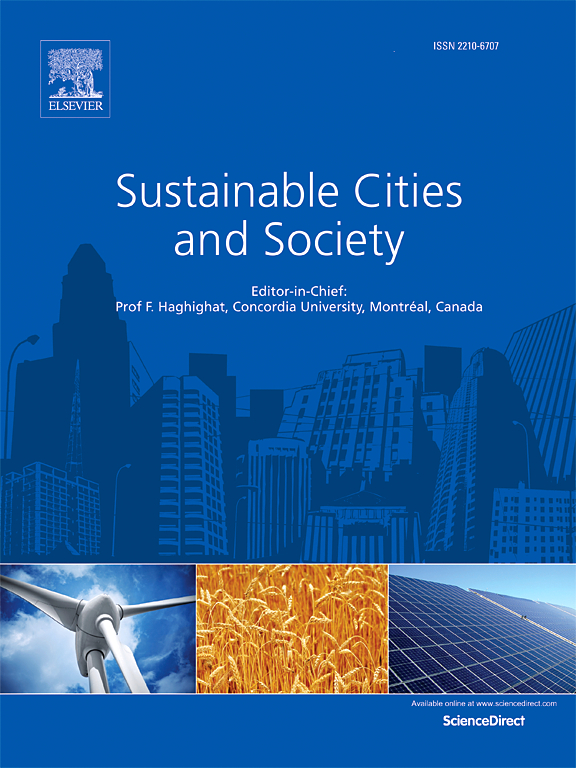Dynamic effect of climate change on flood damage cost in the Andean region of Colombia using an ARDL-ECM model and climate change projections
IF 10.5
1区 工程技术
Q1 CONSTRUCTION & BUILDING TECHNOLOGY
引用次数: 0
Abstract
Natural disasters in Colombia related with climate fluctuations have high economic and social impacts, including the loss of human lives, infrastructure, agricultural production and livestock. Areal and riverine floods are the most common natural disasters in the country given its topography and heavy rainfall seasons. Flooding occurrences have increased during the last decades due the climate change and climate variability with prolonged periods with precipitation also affected by global phenomena as El Niño and La Niña. This research uses an Autoregressive Distributed Lag-Error Correction Model (ARDL-ECM) to describe the dynamics of meteorological variables, such as precipitation, relative humidity and air temperature, and their effects on floods in the Colombian Andean region by using monthly flood damage costs during the period from October 2006 to December 2023. The ARDL-ECM cointegration test indicates a statistically significant relationship among the meteorological variables analyzed and flood damage cost. With the estimated parameters for long and short-run effects, flood cost is projected for future decades using two climate change scenarios for meteorological variables. These simulations provide a perspective of the future impact of floods in the study region and allow discussion of current flood prevention and action policies to mitigate these results. The imminent increase of flood events under climate change found in this study provides even more evidence on the necessity of strengthening current efforts to reduce emissions and deforestation in Colombia.
求助全文
约1分钟内获得全文
求助全文
来源期刊

Sustainable Cities and Society
Social Sciences-Geography, Planning and Development
CiteScore
22.00
自引率
13.70%
发文量
810
审稿时长
27 days
期刊介绍:
Sustainable Cities and Society (SCS) is an international journal that focuses on fundamental and applied research to promote environmentally sustainable and socially resilient cities. The journal welcomes cross-cutting, multi-disciplinary research in various areas, including:
1. Smart cities and resilient environments;
2. Alternative/clean energy sources, energy distribution, distributed energy generation, and energy demand reduction/management;
3. Monitoring and improving air quality in built environment and cities (e.g., healthy built environment and air quality management);
4. Energy efficient, low/zero carbon, and green buildings/communities;
5. Climate change mitigation and adaptation in urban environments;
6. Green infrastructure and BMPs;
7. Environmental Footprint accounting and management;
8. Urban agriculture and forestry;
9. ICT, smart grid and intelligent infrastructure;
10. Urban design/planning, regulations, legislation, certification, economics, and policy;
11. Social aspects, impacts and resiliency of cities;
12. Behavior monitoring, analysis and change within urban communities;
13. Health monitoring and improvement;
14. Nexus issues related to sustainable cities and societies;
15. Smart city governance;
16. Decision Support Systems for trade-off and uncertainty analysis for improved management of cities and society;
17. Big data, machine learning, and artificial intelligence applications and case studies;
18. Critical infrastructure protection, including security, privacy, forensics, and reliability issues of cyber-physical systems.
19. Water footprint reduction and urban water distribution, harvesting, treatment, reuse and management;
20. Waste reduction and recycling;
21. Wastewater collection, treatment and recycling;
22. Smart, clean and healthy transportation systems and infrastructure;
 求助内容:
求助内容: 应助结果提醒方式:
应助结果提醒方式:


